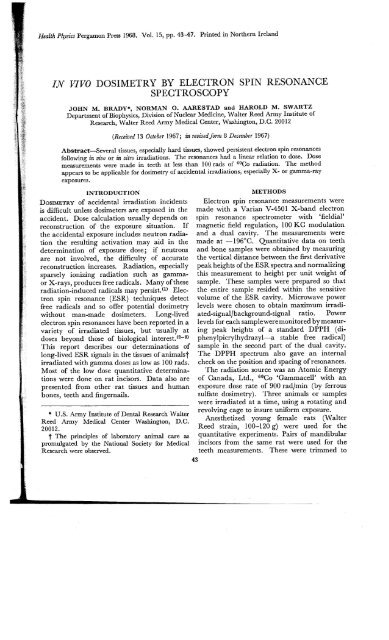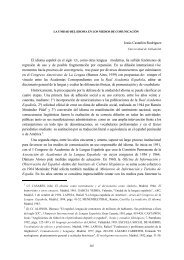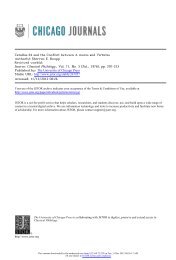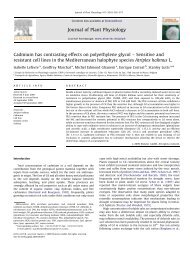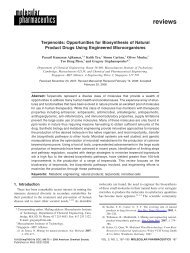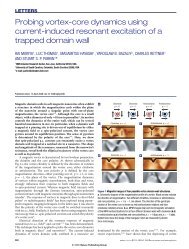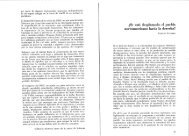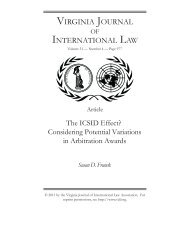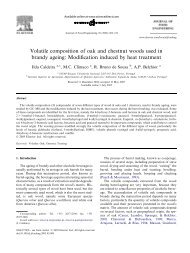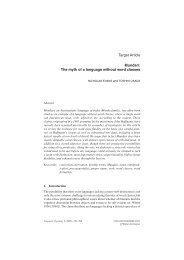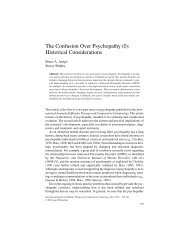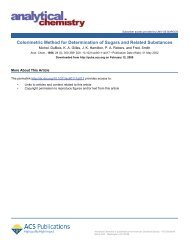in vivo dosimetry by electron spin resonance spectroscopy
in vivo dosimetry by electron spin resonance spectroscopy
in vivo dosimetry by electron spin resonance spectroscopy
Create successful ePaper yourself
Turn your PDF publications into a flip-book with our unique Google optimized e-Paper software.
Health Physics Pergamon Press 1968. Vol. 15, pp. 43--47. Pr<strong>in</strong>ted <strong>in</strong> Northern Ireland<br />
IN VIVO DOSIMETRY BY ELECTRON SPIN RESONANCE<br />
SPECTROSCOPY<br />
JOHN M. BRADY*, NORMAN O. AARESTAD and HAROLD M. SWARTZ<br />
Department of Biophysics, Division of Nuclear Medic<strong>in</strong>e, Walter Reed Army Institute of<br />
Research, Walter Reed Army Medica! Genter, Wash<strong>in</strong>gton, D.G. 20012<br />
(Received 13 October 1967; <strong>in</strong> revisedform 8 December 1967)<br />
Abstract-Several tissues, especially hard tissues, showed persistent <strong>electron</strong> sp<strong>in</strong> <strong>resonance</strong>s<br />
follow<strong>in</strong>g <strong>in</strong> <strong>vivo</strong> or <strong>in</strong> vitro irradiations. The <strong>resonance</strong>s had a l<strong>in</strong>ear relation to dose. Dose<br />
measurements were made <strong>in</strong> teeth at less than 100 rads of 6 °Co radiation. The method<br />
appears to be applicable for <strong>dosimetry</strong> of accidental irradiations, especially X- or gamma-ray<br />
exposures.<br />
INTRODUCTION<br />
DosIMETRY of accidental irradiation <strong>in</strong>cidents<br />
is difficult unless dosimeters are exposed <strong>in</strong> the<br />
accident. Dose calculation usually depends on<br />
reconstruction of the exposure situation. If<br />
the accidental exposure <strong>in</strong>cludes neutron radiation<br />
the result<strong>in</strong>g activation may aid <strong>in</strong> the<br />
determ<strong>in</strong>ation of exposure dose; if neutrons<br />
are not <strong>in</strong>volved, the difficulty of accurate<br />
reconstruction <strong>in</strong>creases. Radiation, especially<br />
sparsely ioniz<strong>in</strong>g radiation such as gammaor<br />
X-rays, produces free radicals. Many ofthese<br />
radiation-<strong>in</strong>duced radicals may persist. < 1 > Electron<br />
sp<strong>in</strong> <strong>resonance</strong> (ESR) techniques detect<br />
free radicals and so offer potential <strong>dosimetry</strong><br />
without man-made dosimeters. Long-lived<br />
<strong>electron</strong> sp<strong>in</strong> <strong>resonance</strong>s have been reported <strong>in</strong> a<br />
variety of irradiated tissues, but usually at<br />
doses beyond those of biological <strong>in</strong>terest.
t<br />
¡<br />
¡<br />
t<br />
\<br />
J. M. BRADY, N. O. AARESTAD and H. M. SWARTZ<br />
potential promise and should be further<br />
<strong>in</strong>vestigated.<br />
Teeth, on the basis of the results presented<br />
here, are good dosimeters and can be useful at<br />
doses as low as 100 rads. They show a l<strong>in</strong>ear<br />


